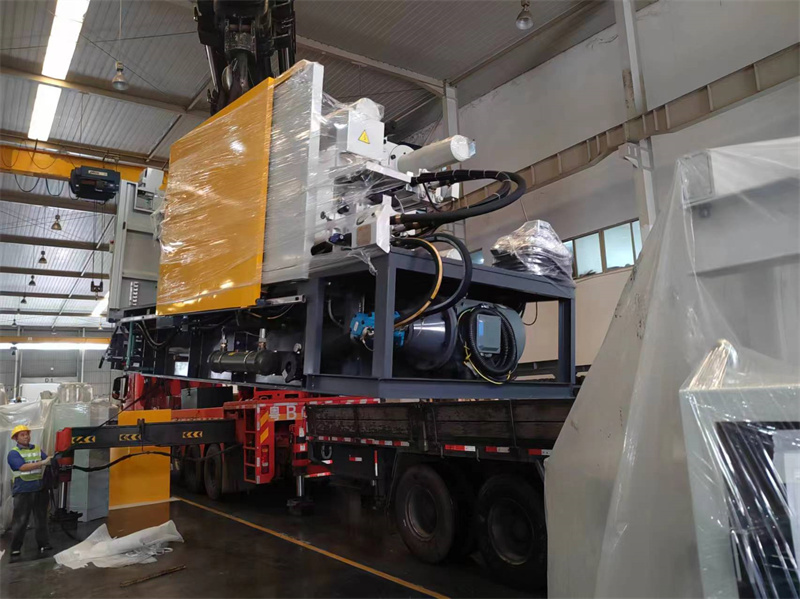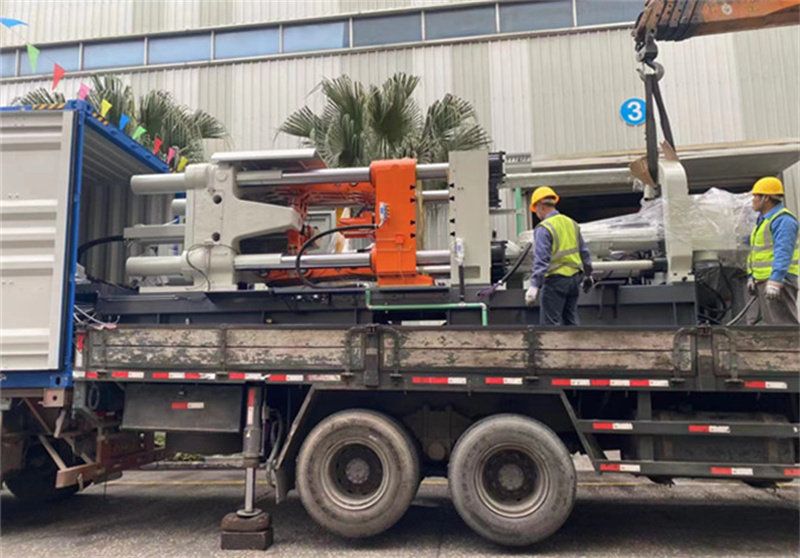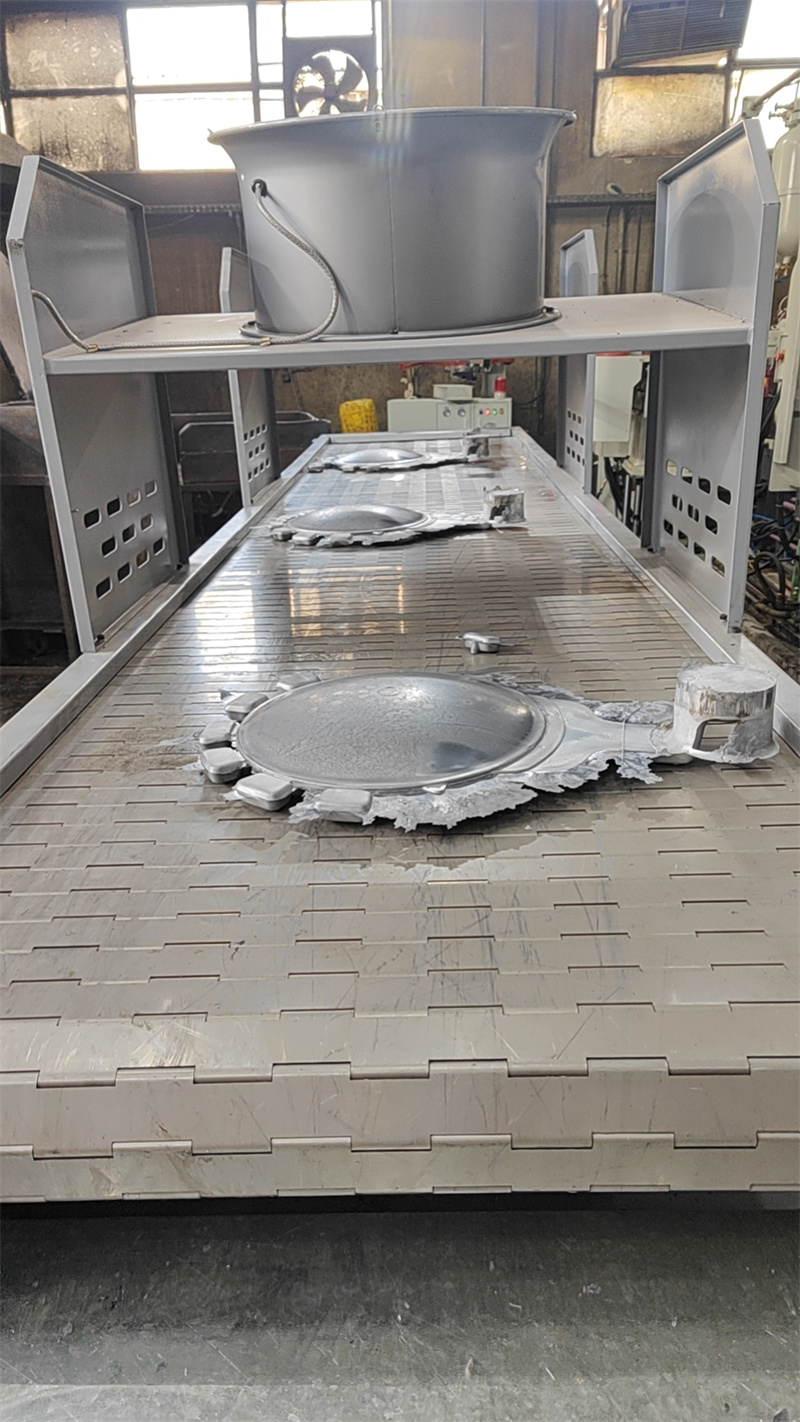Magnesium Alloy Scrap Price
LK Die Casting Machine / 2024-09-23 14:27:21
2024-09-23 by Cherry
Magnesium alloy is increasingly used in aerospace, automobile
manufacturing and electronic products due to their light
weight, high strength, and good processing performance.
However, with the increase in use, the generation of magnesium
alloy scrap is also rising, which has aroused the industry'
s attention to the relationship between its scrap price and

This article will explore this topic in-depth to help
readers understand the market dynamics of magnesium alloy
scrap and the key role of die-casting machines in this
process.
1. The market status of magnesium alloy scrap
Magnesium alloy scrap mainly comes from scraps, waste, and
scrapped parts generated during the production process.
These scraps can be recycled reused and put back into
production, thereby reducing production costs and reducing
resource waste.
With the enhancement of environmental awareness and the
development of resource recovery technology, recycling
and reuse of magnesium alloy scrap has gradually become
a new trend in the industry.
At present, the price of magnesium alloy scrap is affected
by many factors, including raw material market conditions,
production costs, progress in recycling technology and
international trade policies.

1.1 Raw material price fluctuations
The market price fluctuations of magnesium, the main raw
material of magnesium alloy directly affects the value
of magnesium alloy scrap. When the price of magnesium rises,
the production cost of magnesium alloys increases, and
the market demand for scrap will also rise.
Conversely, when the price of magnesium falls, the price
of scrap may also fall.
1.2 Advances in recycling technology
With the continuous development of recycling technology,
the recycling efficiency and economy of magnesium alloy
scrap has been improved. This not only increases the
market price of scrap, but also encourages more companies
to invest in the recycling of magnesium alloys.

2. The role of die-casting machines
Die-casting machines are important equipment for the
production of magnesium alloy parts. Their performance
and efficiency directly affect the production quality
of magnesium alloys and the generation of scrap.
Moderndie-casting machines quickly inject molten magnesium
alloys into molds under high pressure to form products of
various shapes. Different types of die-casting machines
have different performance characteristics, which have an
important impact on the quality and production efficiency
of magnesium alloy products, and can effectively reduce
material waste and scrap generation.
2.1 Technological progress of die-casting machines
In recent years, die-casting machine technology has been
continuously innovated, and more efficient heating and
cooling systems have been adopted, which has significantly
improved the fluidity and filling properties of magnesium
alloys during the casting process.
This technological advancement not only improves the
qualified rate of products, but also reduces the waste
caused by casting defects.
2.2 Energy consumption and efficiency of die-casting machines
Efficient die-casting machines not only reduce energy
consumption but also improve production efficiency. The
high efficiency of the equipment directly affects the
amount of waste, thereby affecting its market price.
If enterprises can improve the operation of die-casting
machines and improve production efficiency, they will be
able to reduce the cost of waste generation to a certain
extent.
3. The relationship between the price of magnesium
alloy waste and die-casting machines
The relationship between the price of magnesium alloy
waste and die-casting machines can be summarized as follows:
3.1 The performance and quality of the die-casting machine
directly affect the quality of magnesium alloy products.
High-quality die-casting machines can improve the yield
rate of castings and reduce the waste generated by unqualified
castings. This quality control not only improves the
economic benefits of the enterprise but also increases
the market value of waste.
If the performance of the die-casting machine is stable
and the precision is high, the quality of the magnesium
alloy products produced will be higher and the scrap rate
will be relatively low. In this way, the magnesium alloy
waste generated will be reduced, which will affect the price
of magnesium alloy waste to a certain extent. When the
amount of scrap decreases, the market supply is relatively
tight and the price may rise.
3.2 On the other hand, the production efficiency of the
die-casting machine will also affect the price of magnesium
alloy scrap.
An efficient die-casting machine can significantly
improve production efficiency and reduce scrap caused
by equipment failure and operating errors. The reduction
of scrap directly leads to a tight supply of scrap in the
market, which in turn pushes up its price.
An efficient die-casting machine can produce more magnesium
alloy products per unit of time, thereby reducing the production
cost of the unit product. At the same time, the improvement
in production efficiency also means that the speed of
scrap generation is relatively slow. This makes the supply
of magnesium alloy scrap in the market relatively stable
and the price will not fluctuate significantly.
Some companies optimize the operation of die-casting machines,
establish an effective scrap recycling mechanism, and reuse
the scrap generated in the production process, thereby
reducing the cost of scrap treatment and obtaining a higher
recycling price in the market.
3.3 The technical level of the die-casting machine will also
affect the difficulty and cost of recycling magnesium alloy
scrap.
With the continuous advancement of science and technology,
new die-casting machines often use more advanced technologies
and processes, making the magnesium alloy products produced
easier to recycle.
For example, some die-casting machines can achieve
zero-residue forming of magnesium alloy products, reducing
the generation of waste materials, and also reducing the
difficulty and cost of recycling. In this way, the price
of magnesium alloy waste materials will also be affected
to a certain extent.
3.4 From the perspective of market demand, there is also a
certain connection between the price of magnesium alloy
waste materials and die-casting machines.
When the market demand for magnesium alloy products is
strong, the utilization rate of die-casting machines will
increase, and the production scale will also expand accordingly.
This will lead to an increase in the generation of magnesium
alloy waste materials, and sufficient market supply, and the
price may drop. On the contrary, when the market demand is
sluggish, the utilization rate of die-casting machines will
decrease, the amount of waste materials generated will
decrease, and the price may rise.
3.5 In the actual production process, enterprises need to
comprehensively consider the price of magnesium alloy waste
materials and the selection of die-casting machines.
On the one hand, enterprises should choose die-casting machines
with excellent performance and high production efficiency
to improve product quality and reduce production costs.
On the other hand, enterprises should also pay attention
to the price trend of magnesium alloy waste materials,
arrange production plans reasonably, and adjust the waste
recycling strategy in time.
For die-casting machine manufacturers, should also continuously
improve the technical level and performance quality of
die-casting machines to meet the market demand for magnesium
alloy products. At the same time, the die-casting machine
manufacturers can also cooperate with magnesium alloy waste
recycling companies to jointly develop more efficient
and environmentally friendly recycling technologies to
contribute to the sustainable development of the magnesium
alloy industry.
In short, there is a close relationship between the price
of magnesium alloy waste and die-casting machines.
Understanding this relationship is of great significance
for enterprises to reasonably select die-casting machines,
formulate production plans, and optimize resource allocation.
At the same time, it will also help promote the sustainable
development of the magnesium alloy industry and achieve
a win-win situation of economic and environmental benefits.
4. Future Outlook
In future development, with the continuous advancement of
science and technology and changes in market demand, the
relationship between the price of magnesium alloy waste
and die-casting machines will continue to evolve. We need
to continue to pay attention to the development trends in
this field and continue to explore innovations to adapt
to market changes and challenges.
4.1 First of all, with the continuous improvement of environmental
awareness, the recycling, and utilization of magnesium alloy
waste will receive more and more attention.
With the strengthening of environmental protection policies
and the continuous advancement of technology, recycling and
utilization of magnesium alloy waste will usher in new
opportunities. As key equipment, the technological upgrade
of die-casting machines will further promote the market
value of magnesium alloy waste.
4.2. The government may introduce more stringent environmental
protection policies to encourage enterprises to increase
the recycling of magnesium alloy waste.
This will prompt die-casting machine manufacturers to develop
more environmentally friendly and efficient die-casting
technologies, reduce the generation of waste and improve
the recycling rate.
At the same time, it will also promote magnesium alloy waste
recycling companies to continuously improve recycling
technology and processing capabilities, reduce recycling
costs, and increase the added value of waste.
Enterprises should pay more attention to sustainable development
in production, reduce resource waste, and realize the
recycling of magnesium alloys through efficient die-casting
machine technology. Such development can not only improve
the economic benefits of enterprises, but also help protect
the environment.
4.3. Secondly, with the development of intelligent manufacturing
technology, die-casting machines will develop in the direction
of intelligence and automation.
Intelligent die-casting machines can realize automated
control, quality monitoring, and fault diagnosis of the
production process, and improve production efficiency and
product quality.
This will help reduce the impact of human factors on the
production process, reduce the scrap rate, and thus
reduce the generation of magnesium alloy waste. At the same
time, intelligent die-casting machines can also optimize
the production process, improve resource utilization,
and reduce production costs through data analysis and
optimization algorithms.
4.4 In addition, with the integration of the global economy
and the intensification of market competition, the competition
in the magnesium alloy industry will become increasingly
fierce.
Enterprises need to continuously improve their competitiveness,
pay close attention to international market trends, reduce
production costs, improve product quality, and flexibly
adjust production strategies to cope with market changes.
In this case, the reasonable selection of die-casting
machines and the Optimization of waste recycling Strategies
will become an important means for enterprises to improve
their competitiveness. At the same time, enterprises also need
to strengthen cooperation with upstream and downstream enterprises
to jointly build a complete industrial chain to achieve optimal
allocation and coordinated development of resources.
5. Conclusion
The relationship between the price of magnesium alloy scrap
and die-casting machines are close and complex. By improving
the technical level and production efficiency of die-casting
machines, enterprises can not only reduce the generation of
scrap but also obtain better economic benefits in the market.
With the development of the industry, further exploring the
potential of this field will help promote the sustainable
use and recycling of magnesium alloys and lay the foundation
for future development.
In this era of increasing attention to environmental protection
and resource recycling, understanding the relationship
between magnesium alloy scrap and die-casting machines
is of great significance to the strategic decision-making
and market layout of enterprises. I hope this article can
provide readers with some valuable insights to help everyone
make more informed choices in this field.
We are LK Die die-casting machine Authorized Official Agent
for Egypt(EGY),Saudi Arabia(KSA),United Arab Emirates(UAE)
The Islamic Republic of Iran(Iran),Qatar(QAT),
The State of Kuwait(Kuwait), The Middle East
Contact us to discuss the details of your project and we'll
be happy to provide you with a review and quote.
Learn more about our die-casting services through:
https://www.zazdiecasting.com/ and https://ae.zazdiecasting.com/
OTHER CONTENT
-

2024-09-19 14:16:15 LK Cold Chamber Die Casting Machine DCC900 Locking Force: 9000KN Die Height: 400-1000mm Space Between Tie Bars: 930x930mm Shot Weight: 13.5Kg Casting Area Max:2250c㎡
More -

2024-09-19 14:11:06 LK Cold Chamber Die Casting Machine DCC280 Locking Force: 2800KN Die Height: 250-650mm Space Between Tie Bars: 560x560mm Shot Weight: 2.9Kg Casting Area Max:700c㎡
More -

2024-09-19 10:23:07 LK Cold Chamber Die Casting Machine DCC580 Locking Force: 5000KN Die Heigh: 350-850mm Space Between Tie Bars: 760x760mm Shot Weight: 6.9Kg Casting Area Max:1250c㎡
More -

2024-09-19 10:11:20 LK Cold Chamber Die Casting Machine DCC400 Locking Force: 4000KN Die Height: 300-700mm Space Between Tie Bars: 669x669mm Shot Weight: 4.7Kg Casting Area Max:1000c㎡
More

